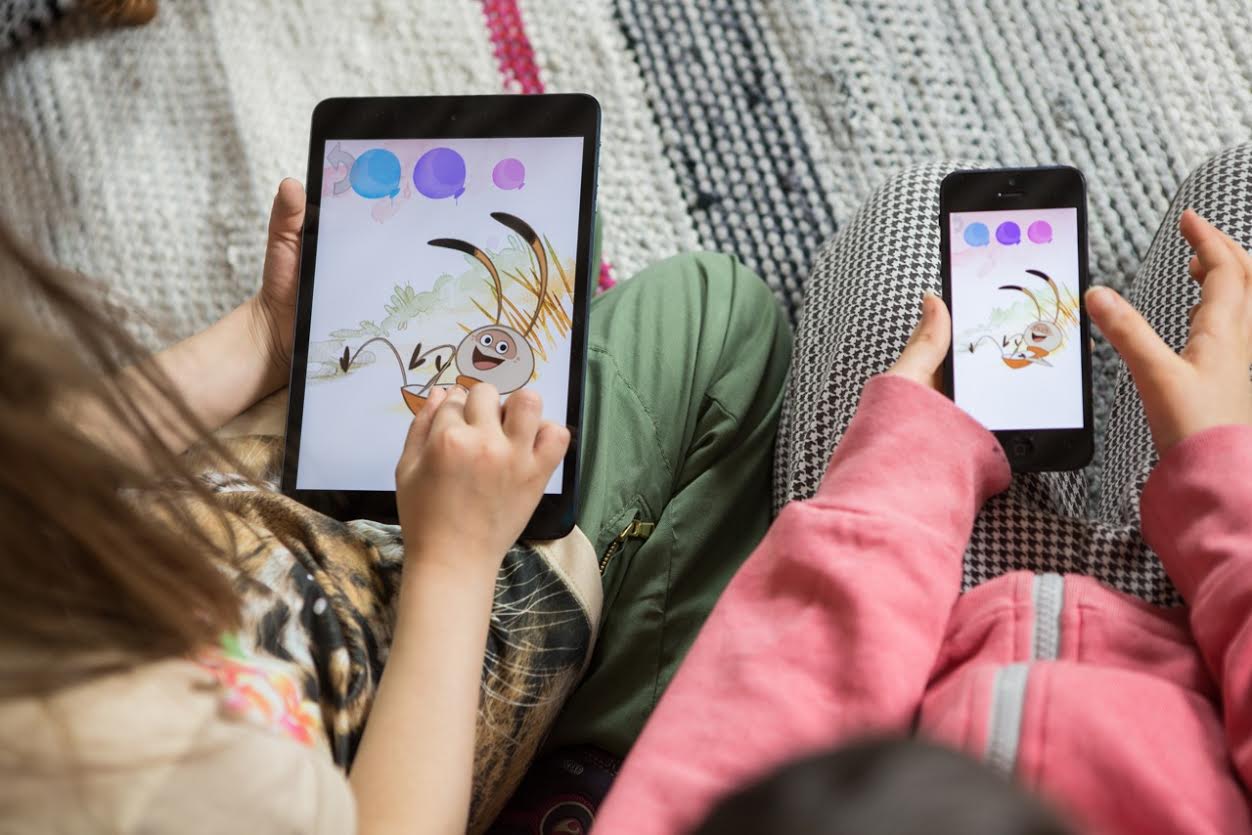With changes coming to Kidscreen online, this is the last edition of Lines, Not Dots. I’m sure it’s not my last Kidscreen column, however. There are too many important children’s entertainment issues to synthesize, too much good data (our own, of course, but also other companies’ and from academia) to analyze, too much fuzzy thinking to be brought into focus.
I want to talk about the importance of laughter. We all seek to make captivating, enriching media for young people. We frequently build in humor as a tool for promoting engagement or comprehension, like the wonderfully silly animations that illustrate the Noodlewords app or Cat’s “freak out” moments in Peg + Cat.
Dubit has been working with Finnish animation and games studio Gigglebug, where laughter is the end, not the means. The company’s mission states that “when we design Gigglebug games, we think about evergreen play and learning patterns that make kids smile in the real world, and we do our best to interpret those experiences for touch screens and TV.”
One of the company’s first apps involves cheering up grumpy animals by tickling them, via the screen. Everyone ends up laughing (on both sides of the glass). The key is simplicity; there aren’t complex layers or elements to the humor. Natural laughter is contagious.
Gigglebug’s philosophy is drawn from Finland’s national early learning curriculum. These days, you can’t read about preschool education without Finland being cited as a success story. (Note: the country’s new core curriculum, due in 2016, is anticipated to sustain the playful early learning focus and add support for using digital technologies.)
Finland’s preschool foundations are open-ended and playful, not pushing assessment or advancement. Indeed, the national core curriculum states that “the prevailing atmosphere in the learning environment should be joyful, open, encouraging and unhurried.” By giving children a supportive environment for discovery, their “positive self-concept will strengthen and their learning-to-learn skills will develop…They will retain the joy of and enthusiasm for learning and face new learning challenges with confidence and creativity.” Gigglebug apps, fittingly, are open-ended and exploratory.
The Finnish system also emphasizes social learning, and new apps coming from Gigglebug emphasize co-play – shared laughter – that facilitates communication. More than any other property Dubit has tested, Gigglebug creates child/parent communication, from sideway glances to check that the other person got the joke to full-on laughter.
Gigglebug works align well, too, with elements of essential childhood learning as laid out by Ellen Galinsky in her must-read book, Mind in the Making. Even the simple, original, tickling app supports perspective taking – assessing someone else’s point-of-view and needs – and making connections – the link between another person’s state and what you can do about it. Gigglebug’s forthcoming Face Race uses digital to recreate a real-world game that promotes joyful social interaction – engaging kids’ focus and self-control and communication.
Some may say that children will learn these skills far better from another person than from an app. I agree. But, because one method is better doesn’t mean it must be exclusive. Children have room in their lives for many different ways to play and learn.
In fact, recent Dubit research with the University of Sheffield on tablet play among children zero to five suggests that there’s an emotional rhythm to children’s day, based in part on external schedules (wake-up, home from preschool, preparing for bed). Those rhythms can bring families together to laugh, sparked by TV, films, games or mobile apps.
Humor as the foundation for children’s entertainment and learning isn’t new. Many readers will remember Tickle U., Cartoon Network’s preschool block built on internal research that found the vast majority of parents valued a healthy sense of humor in their children. It also used external writings on the importance of play, like Kathy Hirsh-Pasek’s Einstein Never Used Flashcards. Tickle U. developer Alice Cahn talks about its genesis:
“The idea for using humor as the scaffolding for children’s programming actually began when I was at Sesame; we looked at the success Sesame Street pioneered using humor as a carrier of information and thought about how appreciation of humor itself was an indicator of intelligence (i.e., you have to be smart enough in order to get the joke). We see this with very young children’s laughter at incongruity: socks on hands, hats on feet – when they know that’s not where they really go, it’s funny.”
“There is great creativity in humor; great joy in telling a funny story; and enormous satisfaction in making others laugh. As physical play is a crucial part of all young children’s development, so is mental and emotional play. Humor, jokes, silliness, laughter are all vital to how our children explore, explain and grow to feel comfortable with the world around them.”
I come from a family in which humor is essential; my journalist father played with words constantly, and my siblings and I continue the tradition. Humor has so many benefits, and in today’s challenging world if we don’t laugh, we may well cry.
Whether you have a preschooler or not, do yourself a favor: Download the original Gigglebug app and tickle a few animals. Or find some other way to make yourself and those around you laugh – in fact, I challenge you to make me laugh with a comment, below.
See you on these pages soon.
























